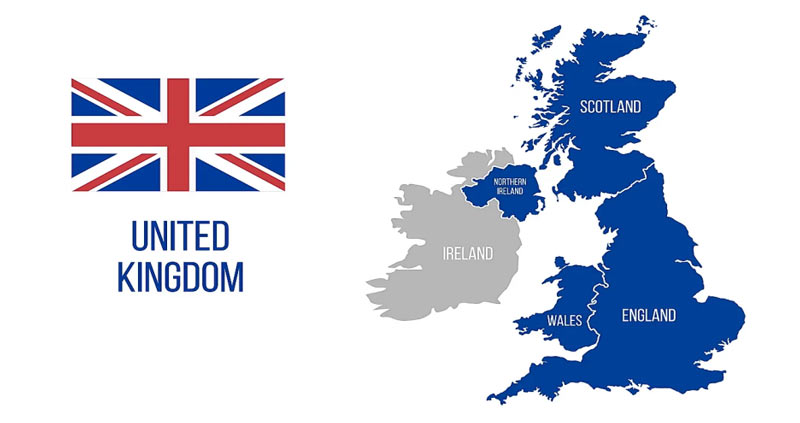What Country Spends the Most on Research and Development?
Jul 30, 2023 By Kelly Walker
In the race to be the world's leader in science and innovation countries are investing heavily in research and development (R&D) - but which country spends the most on R&D? From Silicon Valley tech giants to government initiatives for the public, good investments play a vital role in boosting research activities that lead to discoveries that change how we live.
Read on as we explore the countries worldwide that have dedicated themselves to increasing their spending capabilities for R&D.
List of Sovereign States by Research and Development Spending
USA
The United States of America tops the list with $639 billion spent on research and development in 2019. This amount is more than double the spending of any other country and accounts for over 30% of global R&D spending. The USA has a long-held commitment to scientific progress, investing heavily in developing new technologies and industries.
Investments are made through public initiatives such as NASA's space exploration projects and private enterprises such as Silicon Valley startups. This is supported by high levels of collaboration between universities, laboratories, and industry – all working towards shared goals to create innovative products and services that will have a lasting impact on society.
2. China
China comes in second place with $409 billion in R&D in 2019. It is one of the fastest-growing economies worldwide, and the government has been actively encouraging innovation to drive economic growth over recent years. Public funds are injected into research projects from various sectors, including health care, energy efficiency, and artificial intelligence, while private investments are mainly concentrated in the technology industry.
As a result of this investment, China has become a world leader in many research areas, such as 5G communications, renewable energy, and electric vehicles. This has enabled China to build closer ties with other countries and gain a competitive advantage in global markets.
3. Germany
Germany follows closely behind at third place, with $83 billion spent on R&D in 2019. The German government is committed to developing advanced technologies that will shape the future of the country’s economy, and it provides generous funding for research projects across all sectors, from healthcare to robotics. Private investors are also playing an important role in driving innovation, particularly through venture capital firms that are investing in early-stage startups.
In addition, Germany has a strong culture of collaboration between universities and industry, which has enabled the country to make significant strides in cutting-edge fields such as quantum computing and materials science. This close relationship also allows for the commercialization of research projects more quickly than in other countries.
4. Japan
Japan is in fourth place, with $77 billion spent on R&D in 2019. The Japanese government has long prioritized science and technology development, investing heavily in laboratories and universities for research projects that benefit the public good. This includes initiatives such as improving medical treatments for cancer patients, developing renewable energy sources, and creating artificial intelligence (AI) solutions to tackle societal challenges.
In the past few years, the country also invested significantly in its space sector, launching satellites and spacecraft that have pushed the boundaries of exploration. Private investments focus mostly on robotics, AI, and other tech-related sectors, with venture capital firms leading these investments.
5. South Korea
South Korea follows closely at fifth place with $65 billion spent on R&D in 2019. The South Korean government has long prioritized the development of advanced technologies, investing heavily in research projects that benefit the economy and well-being of its citizens. This includes initiatives such as developing new pharmaceuticals, creating smart cities, and launching space missions to explore outer space.
Private investments are mainly concentrated in technology sectors such as telecommunications, electronics, and online services. In addition, venture capital firms have been actively funding early-stage startups to drive innovation and create new products or services that will impact society.
6. France
France comes in sixth with $45 billion spent on R&D in 2019. The French government has a long-held commitment to developing innovative solutions, reflected in its investments in research projects that benefit society. Public funding is allocated towards energy efficiency, healthcare, and defense initiatives, while private investment is mainly focused on technology sectors such as artificial intelligence and robotics.
In addition, venture capital firms invest heavily in early-stage startups, providing them with the resources to develop innovative products or services that will significantly impact society. This has enabled France to remain at the forefront of modern technology development and make significant strides toward becoming an international leader in innovation and scientific progress.
United Kingdom
The United Kingdom follows at seventh, with $35 billion spent on R&D in 2019. The UK government has long been committed to investing in science and technology, providing generous funding for research projects that benefit the public good. This includes initiatives such as improving healthcare, developing renewable energy sources, and creating new technologies that will shape the economy's future.
Private investments are mainly focused on technology sectors such as artificial intelligence and robotics, with venture capital firms actively funding early-stage startups that develop innovative products or services. This supportive environment has enabled the UK to remain a leader in scientific progress, giving it an edge over its international rivals regarding cutting-edge research in various industries.
8. India
India comes in eighth with $22 billion spent on R&D in 2019. The Indian government is actively investing in research projects that benefit society, allocating public funds towards healthcare, energy efficiency, and defense initiatives.
Private investments are mainly concentrated in technology sectors like artificial intelligence and robotics, while venture capitalists provide early-stage startups with the resources to develop products or services that will have a lasting impact.
In addition, India has been actively collaborating with other countries to share knowledge and expertise for mutual gain – particularly regarding science and technology development. This will enable the country to stay ahead of the curve regarding advanced research and innovation.
FAQs
Q: How does public investment in R&D affect economies?
A: Investing in R&D activities directly affects the economic performance of countries. Economic growth accelerates as investments are made in R&D activities, increasing employment opportunities and productivity. Countries that make large investments in R&D programs also experience advances in technological development, allowing them to stay ahead of their competition.
Q: What other measures can countries take to increase their R&D investments?
A: Besides making direct investments in research and development, various government policies can be implemented to boost R&D activities. These include tax incentives for businesses engaged in research and development initiatives, providing grants and subsidies to support innovative projects, and encouraging collaborations between universities and industry organizations. Implementing such policies will ensure steady funding for research and development activities that benefit society.
Q: What is the future outlook for global spending on R&D?
A: According to OECD projections, global investment in research and development will continue to grow over the coming years. Countries like China, India, and Brazil are expected to increase their GERD significantly over the next few years, with China leading the way. This rise in spending is driven by increased government investment and advancements in technology that lead to more effective research activities. Additionally, developing public-private partnerships will continue to be an important source of funding for various R&D initiatives.
Conclusion
As the global competition for scientific and technological innovation intensifies, countries increasingly invest in research and development activities. South Korea currently leads the world regarding GERD; however, other countries like the United States, China, Japan, Germany, Russia, and the United Kingdom are also making significant investments. Implementing government policies such as tax incentives and grants will ensure steady funding for R&D activities that benefit society.










